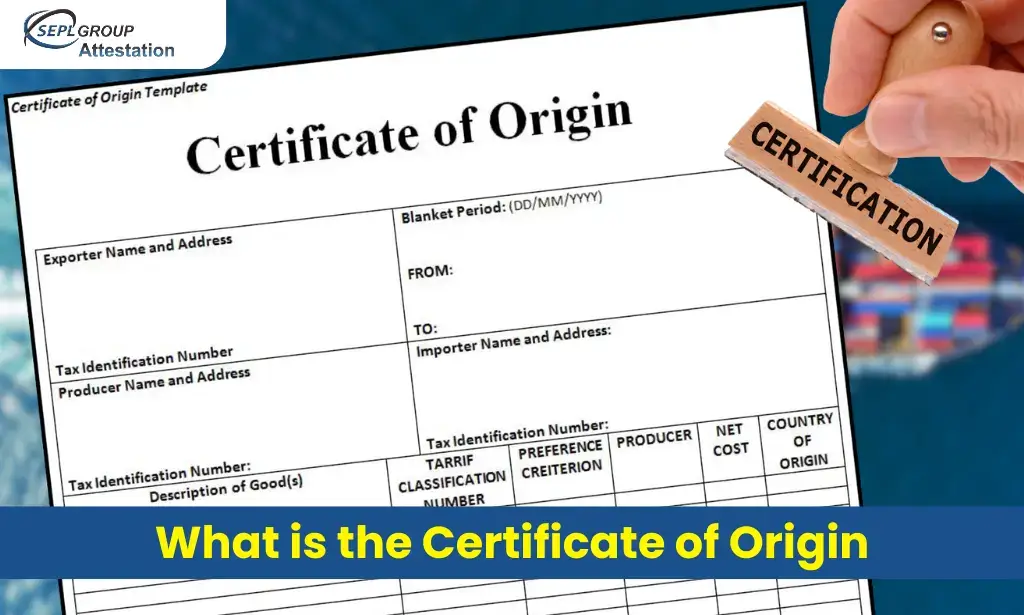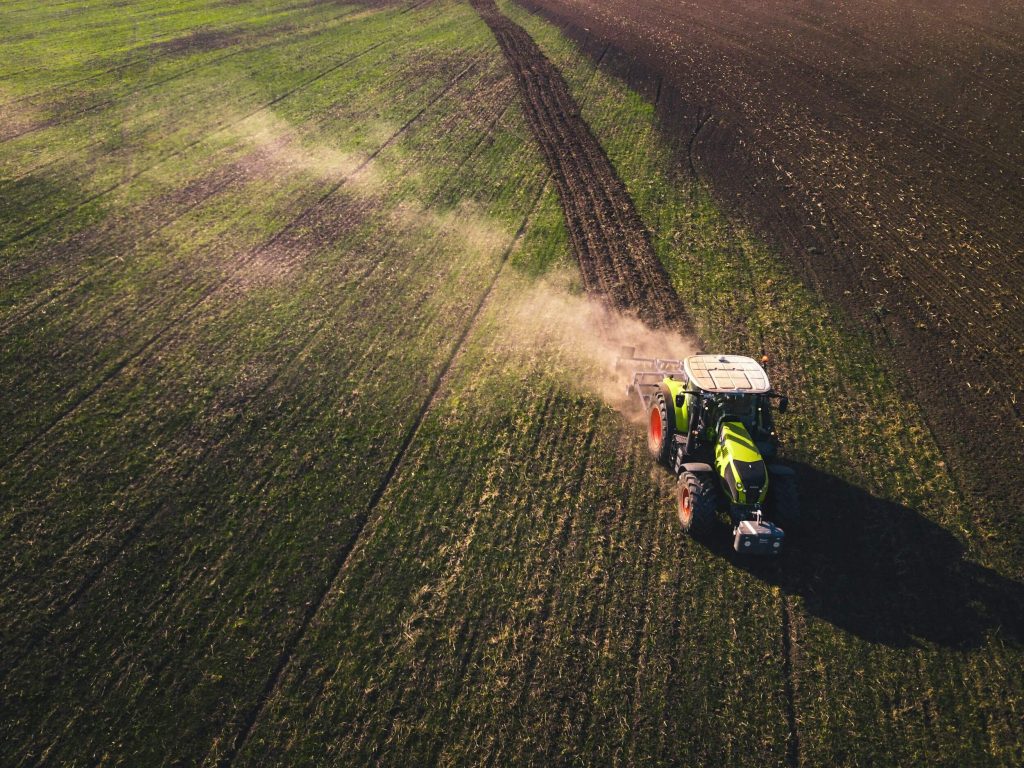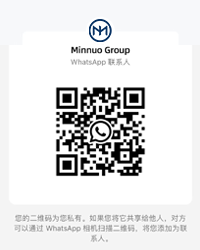As global demand for agricultural machinery continues to grow, import regulations are becoming increasingly complex. During the cross-border flow of agricultural machinery and equipment, not only do they have to face document audits and certification systems, but they also need to adapt to the technical standards and regulatory requirements specific to each country. This article focuses on the import policies, certification systems and compliance recommendations of various countries, aiming to provide exporters, buyers and manufacturers with a systematic guide to customs clearance.
Because “compliance” is no longer just a matter of being able to enter customs, but a core factor in determining whether the equipment can be delivered quickly, whether it can be locally recognized, and whether it can reduce risks and costs.In the increasingly fierce competition in the global market, whoever lays out the standardization earlier will be able to seize the market opportunities faster. Failure to understand the policy may not only lead to goods being delayed or even returned to the port, but also lose the trust of buyers.
If you are a foreign trader, manufacturer or an enterprise planning to enter the international market, this article will help you understand the key certification system, import and export considerations and common misunderstandings in the global mainstream markets (such as the United States, the European Union, Africa, the Middle East, etc.), and help you prepare in advance, go to sea in a compliant manner, and win at the starting point.
Contents
- 1 Ⅰ.Common challenges to cross-border trade in agricultural equipment
- 1.1 1. Certification mismatch: different countries have different definitions of “safety compliance”
- 1.2 2. Incomplete documentation: paperwork problems are often more “stuck” than technical problems.
- 1.3 3. Inconsistency between the product label and the announcement: technical errors can easily lead to intermittent customs clearance.
- 1.4 4. Inconsistency of technical standards in different places: there is no “uniform ruler” in the global market.
- 1.5 5. Expectation of after-sales service after delivery: After passing the customs, you have to be “affordable”.
- 2 II. Key compliance categories to prepare for
- 3 Ⅲ.Compliance Suggestions for Agricultural Machinery Exporters and Manufacturers
- 3.1 1. Establish an “export readiness kit” system to standardize shipping documents and certification configurations
- 3.2 2. Provide local dealers with “remote video guidance” to reduce after-sales costs
- 3.3 3. Work with experienced freight forwarders and compliance agents to avoid “stepping on policy”
- 3.4 4. Create multi-language materials and cultural adaptation strategies to bring buyers closer to trust
- 4 IV. What to do if equipment is delayed or rejected
- 5 Conclusion
Ⅰ.Common challenges to cross-border trade in agricultural equipment
Border agricultural trade is not only a competition of logistics and price, but also a comprehensive test of each country’s regulations, technical standards, machinery compliance and after-sales capabilities. The following are five major key areas that must be mastered in understanding and responding to import policies, each point may directly affect whether the equipment can be successfully customs clearance, whether it can be legally licensed to use.
1. Certification mismatch: different countries have different definitions of “safety compliance”
Different countries and regions have different requirements for the safety, environmental protection and electromagnetic compatibility of agricultural machinery products, and common certifications include:
CE certification (European Union) – Mechanical safety, electrical safety, EMC compatibility and so on, EMC compatibility, etc.
EPA Tier 4 (U.S.) – engine emission standards, must comply with environmental regulations
SONCAP (Nigeria) – through the standards organization pre-trial, mandatory certification list outside the country shall not be allowed to enter the customs
SASO / G- Mark (Middle East) – safety certification of head electrical equipment, pressure components
Solutions:
Define export destinations in product development, implement certification interfaces and structural design;
Prioritize cooperation with manufacturers that already have multinational certification capabilities (e.g., MINNUO supports CE + SASO + ISO standardization export);
Familiarize yourself with the Familiarize yourself with each certification, update requirements and issuing agencies.
2. Incomplete documentation: paperwork problems are often more “stuck” than technical problems.
Even if the equipment performance is correct, if the invoice, certificate of origin, manuals, declarations, bills of lading and other documents are invalid or invalid, it may lead to Customs:
detaining the goods or return shipments;
delaying the process of customs clearance, resulting in demurrage;
refusal to take delivery of goods will affect customer satisfaction.
Solution:
Create a standardized “Export Documentation Package” template (Invoice + CoO + Manual + CI + PL);
Use bilingual templates (e.g., English + Arabic) to meet the requirements of customs and buyers in the destination country;
Check that the technical information (e.g., nameplates, power, voltage) is in line with the documentation.
3. Inconsistency between the product label and the announcement: technical errors can easily lead to intermittent customs clearance.
For example, if the gateway label reads “50kW” while the declaration document reads ‘48kW’, or if the nameplate is not labeled with the EPA mark, all these will be recognized as “high-risk items” by the customs system. These will be recognized by the customs system as “high-risk items”, which will trigger manual examination, mandatory re-inspection, and even seizure of goods.
Precautions:
All nameplates and certificate data must be completely consistent (especially power, voltage, origin, brand name);
use machine + document “double access” system to ensure that the technical declaration is correct;
focus on the engine, braking system, electronic control system of the standard number and the consistency of the actual failure.
4. Inconsistency of technical standards in different places: there is no “uniform ruler” in the global market.
For example:
EU has strict structural requirements for protective cover;
USA pays attention to consumption emission and noise;
Middle East pays attention to high temperature resistance and voltage compatibility (e.g. 220V/60Hz);
India and Africa pays attention to the motor starting method and ease of maintenance.
Suggestions:
Confirm with the local agent about the usage scenario, climate environment and power grid standard before exporting;
Design different versions of product modules (such as “Africa version”, “high temperature version”, “low voltage version”) in advance; Work with the local agent to confirm with the local agent about the usage scenario, climate environment and power grid standard before exporting; Design different versions of product modules in advance. Design different versions of product modules in advance (e.g. “Africa version”, “high temperature version”, “low voltage version”);
Work with experienced domestic compliance consultants to make localized vehicle suggestions.
5. Expectation of after-sales service after delivery: After passing the customs, you have to be “affordable”.
In addition to product performance, customers are also very concerned about:
Is it possible to remotely debug the product?
Is there a Chinese/local language manual?
How long does it take for spare parts to arrive?
Who will repair it after one year?
Suggestions:
Set up overseas spare parts warehouse or cooperate with logistics platforms (e.g. use DHL to deliver high-frequency parts such as filter cartridges);
Provide Zoom remote guidance, video teaching packages, and remote firmware upgrade support;
Cooperate with brands like MINNUO, which has the ability of “factory pre-installed training documents + remote debugging support”.
Only by truly understanding the logic, data requirements and service standards of the target countries for agricultural machinery can we avoid being “stuck in the harbor”. Exporters and international buyers are advised to set up their own cross-border policy database, document review system and compliance officer.
And brands like MINNUO with global certification and export experience not only provide compliance documents, but also customize the export certification portfolio, operation guidelines and after-sales response process for customers in advance, which truly realizes the international agricultural machinery experience of “delivery is on duty”.

II. Key compliance categories to prepare for
Agricultural machinery exports, especially for overseas markets in many countries, can not only rely on “equipment to meet the standards” to pass customs. In order to successfully pass the technical review, regulatory system and customs process in various countries, we must complete the system around the following three aspects of compliance preparation:
1. Product certification and safety standards
improve the compliance certification list, corresponding to the testing standards of each destination exports have their own specific list of compliance certifications, corresponding to the testing standards, labeling format and scope of application are not the same. The following are common types of certifications and their meanings:
Examples of common certifications:
CE (European Union): Complies with the Machinery Directive (2006/42/EC), the Low Voltage Directive and the EMC Directive, and is the “entry ticket” for the circulation of agricultural machinery and equipment in the European Union.
EPA Tier 4 (U.S.): mandatory for equipment loaded with a main engine, ensuring that exhaust emissions meet the U.S. Environmental Protection Agency’s emission limits.
SASO (Bridge): applies to electrical, safety and energy efficiency compliance standards, administered by the Saudi Arabian Standards Organization.
SONCAP (Nigeria): Part of the country’s import regulatory system, some industrial equipment is required to be licensed by a certification body for customs clearance.
G-Mark (Gulf States): The Gulf States Council’s (GCC) mark of conformity system for electrical machinery and equipment.
ISO 9001 / ISO 13485: Although it is not a mandatory import certification, it represents that the manufacturer has a standardized quality management and system, which helps to enhance the cross-border buyer’s trust in the process.
Professional advice:
in the product design stage that is with the target market standard pre-planning;
confirm whether the cooperative laboratory is recognized by the customs of the destination country;
use the certification summary list template to manage the corresponding certification of each model, then the declaration of customs unity.
2. Required import and export documents
into the review of the most prone to error is not the equipment itself, but the documents are not complete, the format is not correct, the language does not match the paperwork and other issues.
A complete set of export information should normally include:
Commercial Invoice (Commercial Invoice): should indicate the product information, amount, currency, send and receive both parties and contract number;
Packing List (Packing List): set out the form of packaging, volume, gross and net weight, tray configuration and other information;
Certificate of Origin (Certificate of Origin, CoO): according to bilateral trade agreements. Certificate of Origin (CoO): may affect the tariff rate according to the bilateral trade agreement;
Bill of Lading (B/L): used for actual logistics operation and port clearance;
Product Manual (including language version of the destination country): to provide support for the recognition and supervision of the gift;
Certificate of Conformity or Pre-inspection Document of PSI: related to the mandatory requirements of certain countries (such as Saudi Arabia, Nigeria, etc.).
⚠️ Special reminder:
“The loss of any one document may lead to customs clearance delays, goods stranded in port, be sampling or even return shipments.”
3. Pre-Shipment Inspection (PSI)
“Pre-Shipment Inspection” (PSI) is a mandatory inspection procedure for product appearance, performance, certification and conformance by a designated third-party organization prior to the shipment of the goods, which is applicable to several developing markets.
Commonly required countries:
Nigeria: must be through SONCAP, issued by the certification body of the final COC (Certificate of Conformity);
import: all imports involving electrical, power products are required to complete the SASO pre-shipment inspection;
Egypt, Kenya: the implementation of the nationally-authorized PSI verification process.
Inspection Executing Agency:
Swiss Universal Notary Public
Intertek
Bureau Veritas
These agencies usually have global authorization to provide testing services in the country of production or shipment.
PSI-related parameters for reference:
Item Content
Cost range of about 250 – 500 USD per shipment
Delivery time is usually 7 – 10
Note It is recommended that the agent or, to ensure that
To achieve a “worry-free customs clearance” of exported agricultural machinery, enterprises should:
establish a set of compliance information template library (a set of standards for each country);
with a dedicated staff responsible for the preparation of certification information and customs clearance documents. Have a special person responsible for the preparation of certification information and customs clearance documents;
Priority is given to selecting manufacturers with complete export positioning services, such as MINNUO not only supports export-level certification, but also equipped with multi-language manuals, standardized packing lists, and remote document verification mechanism to maximize the efficiency of customs clearance and customer satisfaction.
Country summaries: certification and import tips
| Country | Required Certifications | Required PSI | Key Import Tips |
| US EPA Tier 4 | US EPA Tier 4 | ❌ | Emissions data must match engine serial number |
| Germany | CE, RoHS | ❌ | Manual must be in German |
| Nigeria | SONCAP + PSI | ✅ | Register on SON Portal prior to shipment |
| Saudi Arabia | SASO、G-Mark + PSI | ✅ | Arabic/English labeling; uses SABER system |
| India | BIS or Ministry of Energy | ❌ | Must support 220V/50Hz, compatible with local grid |
| Brazil | National Metro Association | ❌ | Requires local import agent, cannot ship direct |
Ⅲ.Compliance Suggestions for Agricultural Machinery Exporters and Manufacturers
In the face of increasingly complex international agricultural machinery import and export policies, manufacturers and exporters must be fully “export-ready” at the source if they want to speed up customs clearance, reduce chargebacks and improve buyer satisfaction. Below are four high-value implementation suggestions, combined with practical scenarios and industry experience.
1. Establish an “export readiness kit” system to standardize shipping documents and certification configurations
What is an export readiness kit?
It refers to each batch of factory equipment required for certification documents, packaging labels, instructions, marking stickers and other pre-packaging, pre-review, standardized output, so that the equipment factory that has the conditions for customs clearance.
The package should contain:
copies of valid certifications (e.g. CE, EPA, SASO, etc.);
product manuals in local languages (German, Arabic, Portuguese, etc.);
compliance nameplates and safety labels on the machine (including CE/EPA stickers); and
installation guides, commissioning instructions, and a list of recommendations for customs clearance for the export version.
Advantages:
Reduce manual errors and customs “missing information” returns;
Buyers can install and use the machine immediately after delivery;
Quickly connect with agents and reduce training costs.
2. Provide local dealers with “remote video guidance” to reduce after-sales costs
Overseas dealers often lack technical personnel, and buyers have limited understanding of operation and installation, how to cross-border remote guidance has become one of the key service forces.
Suggested Configurations:
Provide product debugging videos (e.g. GPS settings, voltage calibration, hydraulic testing);
Provide remote real-time support channels such as Zoom, Skype, or WhatsApp;
Pack common failure videos and standard operation videos into customer delivery materials.
For example, MINNUO provides Zoom debugging assistance to customers in Africa and Southeast Asia to help them quickly complete steps such as navigation calibration, route setting, and spraying parameter setting.
Advantages:
Increase customer satisfaction and reduce returns due to inability to operate;
Remote assistance is more efficient and less costly than sending out technicians.
3. Work with experienced freight forwarders and compliance agents to avoid “stepping on policy”
Agricultural equipment involves complex customs clearance policies, including emissions, compliance, safety, electricity, voltage, language and other dimensions. It is easy for exporters to step into the pits on their own, but working with a team of professionals who know what they are doing can greatly improve efficiency.
Suggested targets for cooperation:
Freight forwarders familiar with international customs clearance of agricultural equipment (e.g. special freight forwarders for agricultural machinery);
Compliance consultants or import/export agents familiar with the import rules of various countries;
Consulting organizations that can provide one-stop service for certification application, PSI booking, and packaging advice.
Advantages:
Reduce demurrage penalties and refunds due to data problems;
PSI can be realized in key markets such as Nigeria, Saudi Arabia, Egypt, etc.;
Get the first-hand policy updates (such as changes in the SABER system, the new rules of SONCAP annual review).
4. Create multi-language materials and cultural adaptation strategies to bring buyers closer to trust
International buyers continue to attach importance to “local language + sense of professionalism”, especially in the Middle East, Africa and South America.
Strategies that can be put into practice:
Provide product information and operation guide in at least English + the language of the destination country;
Use bilingual design of icons/slogans on the package (e.g., English+Arabic, English+Spanish, English+Portuguese);
Built-in language options or graphic panel stickers before export, eliminating the need to change the control panel;
Provide OEM/ODM packaging with the customer’s brand logo to enhance the sense of belonging to a localized area.

IV. What to do if equipment is delayed or rejected
Despite our best efforts, mistakes happen. Here’s how to deal with it:
Incorrect declaration of commodity value? Submit a Customs correction request
Missing COO? Request expedited documentation from the Chamber of Commerce
Labeling rejected? Use compliant labeling or repackage locally
Detained at port? Contact your local agent and file a complaint through Customs Dispute Resolution.
Conclusion
In today’s agricultural machinery industry, exporting is no longer just about shipping machines—it’s about mastering documentation, certification, and collaboration. As global standards become stricter and more fragmented across regions, understanding each country’s import policies is more important than ever.
Why? Because in 2025 and beyond, compliance equals access.
Whether it’s emission data in the U.S., labeling in Saudi Arabia, or pre-shipment inspections in Nigeria, a small mistake in certification or missing paperwork can lead to major delays, penalties, or rejected shipments.

